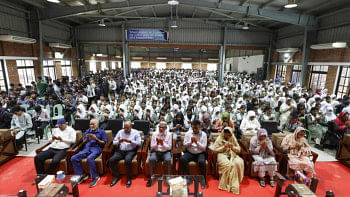Nuances of maternity benefits under Bangladesh labour laws

When talking about women's right to work, it is not sufficient to only discuss the participation of women in the labour market. It is also equally important to ensure that no woman, irrespective of reproductive choices, gets discriminated against. One of the significant initiatives to ensure this is ensuring access to sufficient maternity benefits at workplace.
The term "maternity benefits" is commonly used to describe the monetary compensation or support afforded to women during their maternity leave. The purpose is to give women the time and assistance they need to heal from childbirth and care for newborns. These benefits may take the shape of paid time-off, income replacement benefits, or other types of assistance. Under the Bangladesh Labour Act 2006 (BLA), "maternity benefit" essentially means the sum of money payable to a woman employee with leave.
Section 46 of the BLA mandates that all employers provide female employees with maternity leave and benefits for eight weeks leading up to the expected date of delivery and eight weeks afterward. Section 45 further provides that employers cannot put any woman to work doing strenuous labor, standing for long periods of time, or work that is likely to harm her health, if the employer has been informed, or has reason to believe that the woman is going to give birth within ten weeks or has given birth within the last ten weeks.
However, it is important to mention that section 46 imposes two prerequisites for receiving maternity benefits: first, the expectant woman must have worked for the employer for at least six months prior to the day of delivery. Second, if she has more than one child at the time of delivery, she will not be entitled to the maternity benefit but the leave to which she would otherwise be entitled. Therefore, newly employed workers and mothers who already have more than one child, are deprived of these benefits.
Moreover. some offices are expressly excluded from the application of the BLA according to section 1(4) and they remain free to make their own maternity policies. Furthermore, section 2(65) excludes people employed mainly in a managerial or administrative capacity from the definition of workers, thus making the benefits of BLA inapplicable to them as well. Lastly, since the BLA applies to the formal sector, practices within the informal sector remain unregulated. Consequently, the fate of women's (e.g., domestic aides) employment hangs in the balance in these cases.
In a nutshell, it can be argued that the current legal mechanism does not go far enough. Fortunately, the Bangladesh Labour (Amendment) Act 2023, which would increase the length of maternity leave to 120 days from 112 days, received preliminary approval from the cabinet recently. It is a nascent step in the right direction. However, the policy-legal framework needs an overhaul to materialise truly transformative changes in this area.
It is time to recognise the specific disadvantages women face in the labour market while making policies and laws. Only then can we truly go beyond the stale promises of formal equality and eradicate substantive gender gaps persisting in workplaces.
The author is a law student at the University of Dhaka.

 For all latest news, follow The Daily Star's Google News channel.
For all latest news, follow The Daily Star's Google News channel. 



Comments